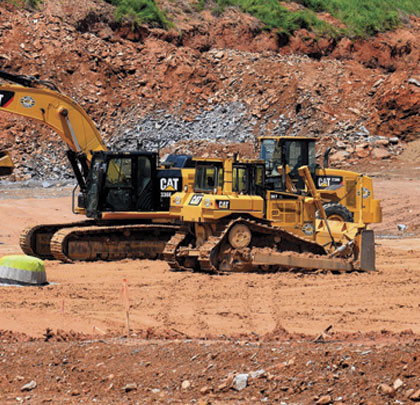Every year, accidents on construction sites across the globe lead to fatalities and serious injuries. Indeed, incidents such as falling from scaffolding or being struck by a vehicle make working on a building site one of the most dangerous professions in the world.
In the USA, there were 937 fatal work injuries in the private construction industry in 2015 alone, the highest number since 2008. Each year, one in ten construction workers is injured on site, a huge number considering the industry workforce consists of approximately 9.6 million.
Although health and safety legislation has gone a long way to help prevent such tragedies from occurring, these shocking figures show there is still clearly much to be achieved if employers are to offer their workers the best possible protection.
So, what options are available to keep the construction workforce safe?
Safety firms are increasingly harnessing the power of the latest technology to produce ever more innovative equipment that promises to improve the welfare of construction workers.
Take reversing alarms. Most of us are familiar with the traditional “beep beep” noise these devices emit when vehicles are reversing; they’re fitted as standard on most construction and commercial vehicles the world over, and are credited with saving multiple lives in the workplace and beyond. But in recent years, it has been noticed that when several alarms can sound at once, which is a regular occurrence on construction sites, it is difficult to establish where the noise is coming from.
WHITE SOUND REVERSING ALARMS
Thanks to the latest technology, a new generation of reversing alarms are being introduced, such as global safety firm Brigade Electronic’s patented White Sound™ bbs-tek® reversing alarm. These alarms make a “ssh ssh”’ white sound that can be heard clearly on a construction site, even when workers are wearing headphones or ear defenders. White sound reversing alarms use broadband frequencies, giving greater directional information to the ear. This means the sound is instantly locatable—a huge leap forward in terms of safety, because even a split-second’s confusion can result in serious injury or death.
Other innovations include the new generation of onboard cameras, which offer complete surround views of the area outside a vehicle; eliminating blind spots; and reducing collisions with people and objects. As well as HGVs and vans, these advanced camera systems can be fitted to construction machinery, such as front loaders and excavators.
RADAR SYSTEMS
Advances in the capabilities of radar systems mean these are gaining popularity as a tool to protect staff working on sites where conditions are challenging. Radar systems work by detecting people and objects in the driver’s blind spot, providing in-cab visual and audible warnings even in harsh workplace conditions such as smoke, fog, and dust. In construction, this type of radar safety equipment is a good choice for potentially hazardous industries such as mining, quarrying, and agriculture where vehicles used tend to have larger blind spot areas.
CONCLUSION
As with any industry, safety must always be the number one priority. With the help of technological innovations, maybe we can start to see a future where tragedies on the construction worksite are a thing of the past.
About the author:
Corey Heniser is an expert at Brigade Electronics, a worldwide market-leading provider of safety devices and solutions for commercial vehicles and machinery. Brigade’s range of products works to reduce the risk of collisions and protect vulnerable road users by minimizing vehicle blind spots and assisting drivers to maneuver safely. Brigade’s product portfolio includes the Backeye 360º, camera monitor systems, bbs-tek® White Sound™ reversing alarms, ultrasonic obstacle detection, radar obstacle detection, and mobile digital recorders. For more information, visit www.brigade-electronics.com.
_________________________________________________________________________
Modern Contractor Solutions, April 2018
Did you enjoy this article?
Subscribe to the FREE Digital Edition of Modern Contractor Solutions magazine.



